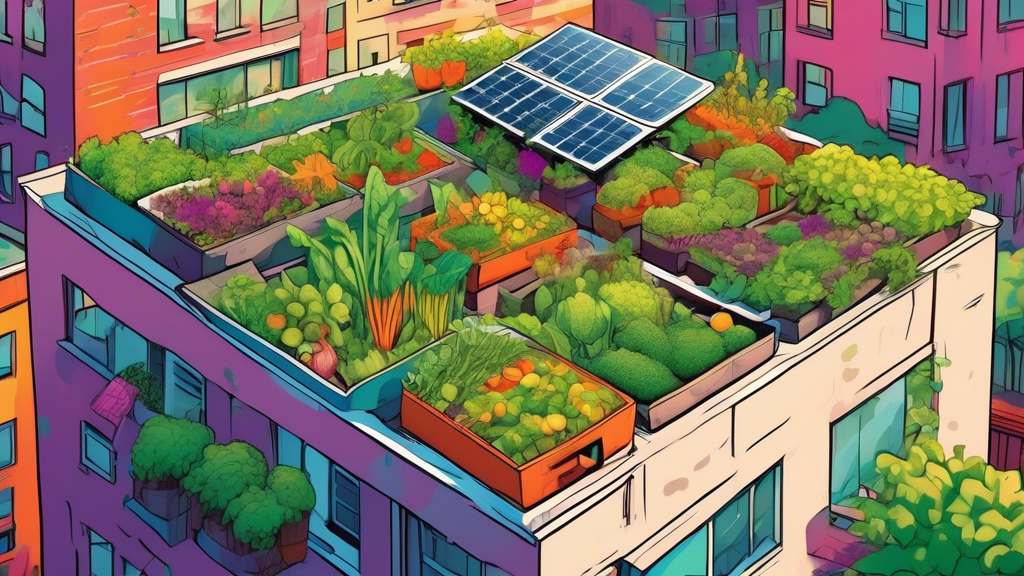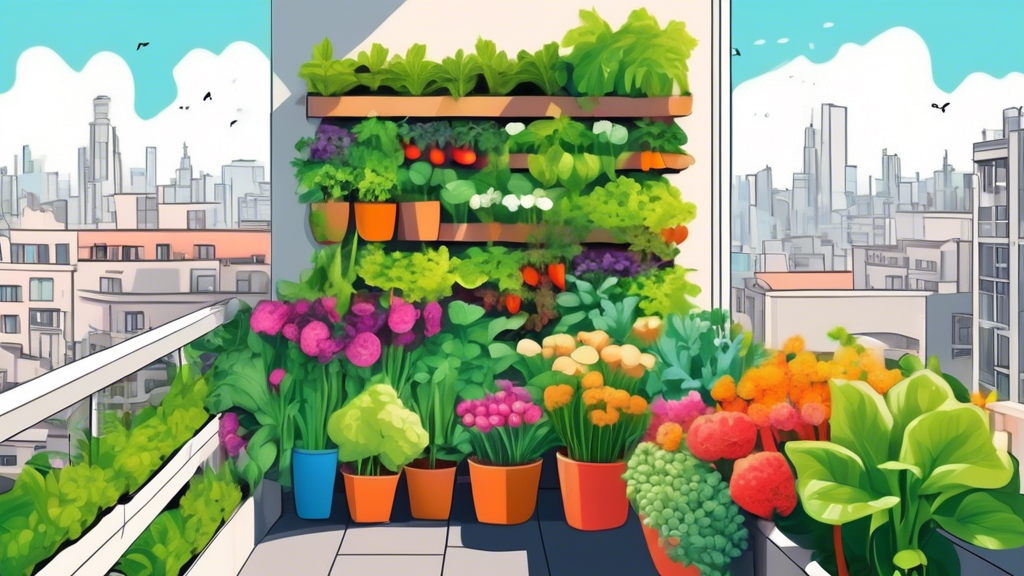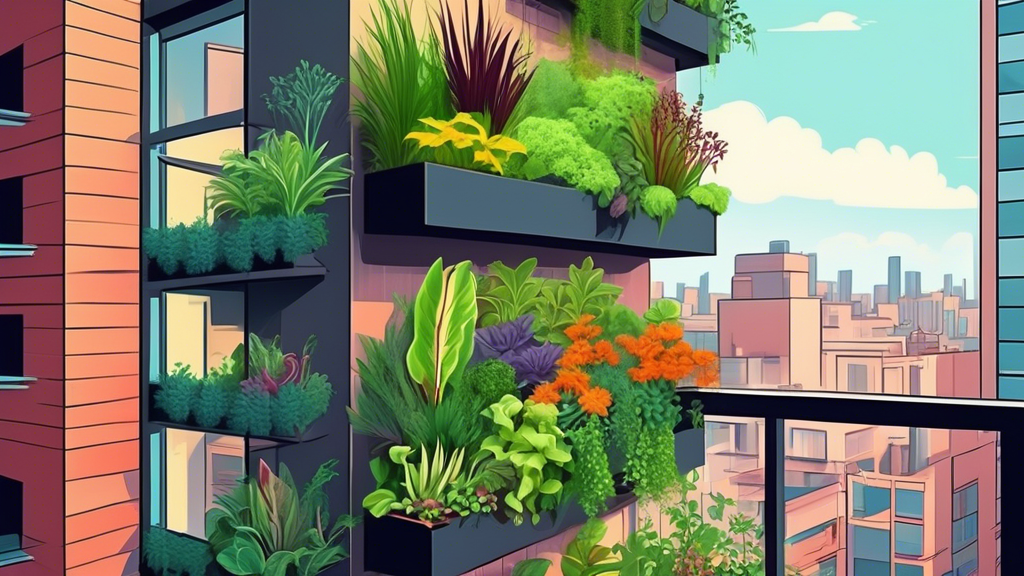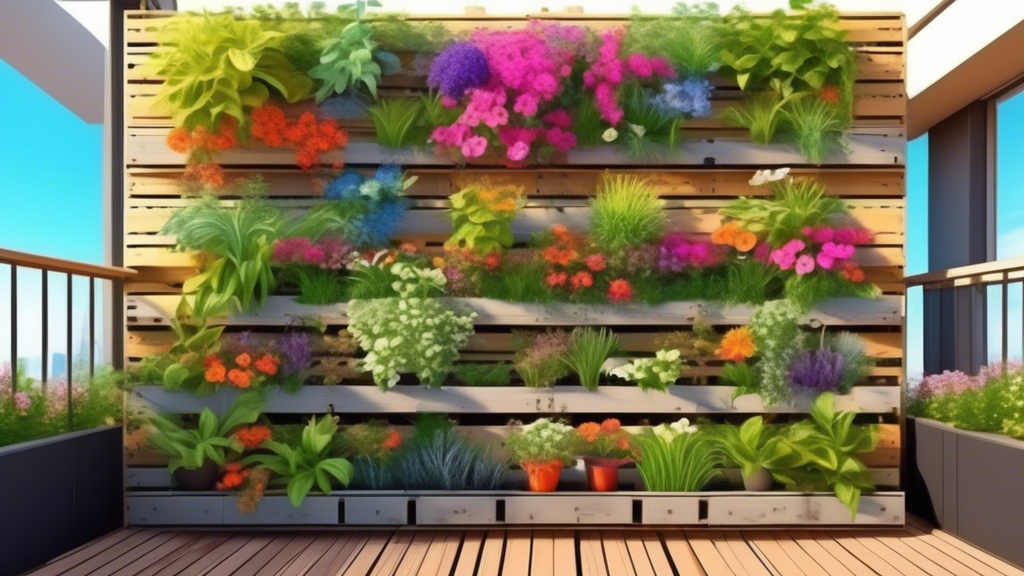
Why Your Urban Garden Needs Sustainable Practices
Urban gardening is more than a trend; it’s a movement towards self-sufficiency and ecological responsibility. By integrating sustainable methods, you not only grow food but also contribute positively to your local environment.
The Environmental Impact
Sustainable urban gardening reduces your carbon footprint by minimizing transportation of food, conserves vital water resources, and creates habitats for pollinators and beneficial insects, boosting local biodiversity.
The Personal Benefits
Enjoy the health advantages of consuming chemical-free produce, the resilience of a garden that thrives with natural cycles, and the profound satisfaction of nurturing an ecosystem right at home.
Addressing Urban Gardening Challenges with Sustainable Solutions
Challenge: Limited Space
Solution: Maximize your growing area with vertical gardens, espaliered fruit trees, and stackable planters. These methods allow you to grow upwards, making the most of balconies and small patios.
Challenge: Poor or Contaminated Soil
Solution: Build raised beds filled with clean, organic soil and compost. Adopt no-till gardening to preserve soil structure and microbiology, preventing contamination and promoting health.
Challenge: Water Scarcity & Runoff
Solution: Install rain barrels to collect rainwater, use drip irrigation systems for efficient watering, and employ ollas (porous clay pots) that release water directly to plant roots, reducing evaporation.
Challenge: Pest and Disease Management
Solution: Attract beneficial insects like ladybugs and lacewings by planting flowers such as marigolds and yarrow. Use companion planting—like growing basil with tomatoes—to naturally repel pests.
Core Sustainable Practices to Implement Today
Composting: Turning Waste into Black Gold
Transform kitchen scraps and yard waste into nutrient-rich compost. Methods include vermicomposting (using worms), bokashi (fermentation), and traditional compost bins. This reduces landfill waste and feeds your plants.
Water Wisdom: Conservation and Collection
Utilize soaker hoses and mulching to retain soil moisture. Collect greywater from showers and sinks (where safe and legal) to irrigate non-edible plants, further conserving potable water.
Building Healthy Soil Naturally
Avoid synthetic fertilizers. Instead, use organic mulches like straw or wood chips, and plant cover crops such as clover to fix nitrogen in the soil, enhancing fertility without chemicals.
Choosing the Right Plants
Opt for native species and heirloom varieties that are adapted to your local climate. Incorporate perennials like asparagus and rhubarb for a low-maintenance, enduring garden ecosystem.
Sustainable vs. Conventional Urban Gardening: A Quick Comparison
| Aspect | Sustainable Approach | Conventional Approach |
|---|---|---|
| Soil Health | Focuses on building living soil biology with compost and organic matter. | Relies on synthetic fertilizers that can degrade soil structure over time. |
| Pest Control | Uses biodiversity and companion planting to manage pests naturally. | Often employs broad-spectrum pesticides that harm beneficial insects. |
| Water Use | Employs rainwater harvesting and drip systems to minimize waste. | Typically uses sprinklers, leading to high evaporation and runoff. |
| Long-Term Impact | Creates a regenerative system that improves ecosystem health. | May lead to soil depletion and reduced biodiversity. |
Unique Insight: The “Soil Food Web” – The Secret Life Beneath Your Feet
Beneath the surface of your garden lies a bustling metropolis of microorganisms—bacteria, fungi, protozoa, and nematodes—that form the Soil Food Web. This hidden ecosystem is the engine of plant health. By nourishing it with compost and avoiding chemicals, you enable plants to absorb nutrients more efficiently, naturally suppress diseases, and create a self-sustaining garden. It’s a profound shift from feeding plants to feeding the soil that feeds them.
Frequently Asked Questions (FAQs) About Sustainable Urban Gardening
I live in an apartment with only a balcony. Can I still be sustainable?
Yes! Use containers with self-watering systems, start a small worm compost bin, and collect water from safe household sources like dehumidifiers. Every small action contributes to sustainability.
Isn’t sustainable gardening more expensive?
While initial setup might cost more (e.g., buying a rain barrel), sustainable practices save money over time by reducing water bills, eliminating the need for store-bought fertilizers and pesticides, and producing your own compost.
How do I start a compost bin if I’m worried about smells and pests?
A well-balanced compost bin (with the right mix of greens like vegetable scraps and browns like dried leaves) shouldn’t smell. Enclosed systems like tumbler bins or bokashi buckets are designed for odor-free composting in urban spaces.
Can sustainable practices really make a difference in a big city?
Absolutely. Collective urban gardening efforts create green corridors for wildlife, mitigate the urban heat island effect, improve air quality, and manage stormwater, making cities more livable and resilient.
Conclusion: Embracing sustainable practices in urban gardening is a journey of continuous learning and small, impactful steps. Start with one change—whether it’s composting or planting a native flower—and watch your garden, and your environment, thrive.






